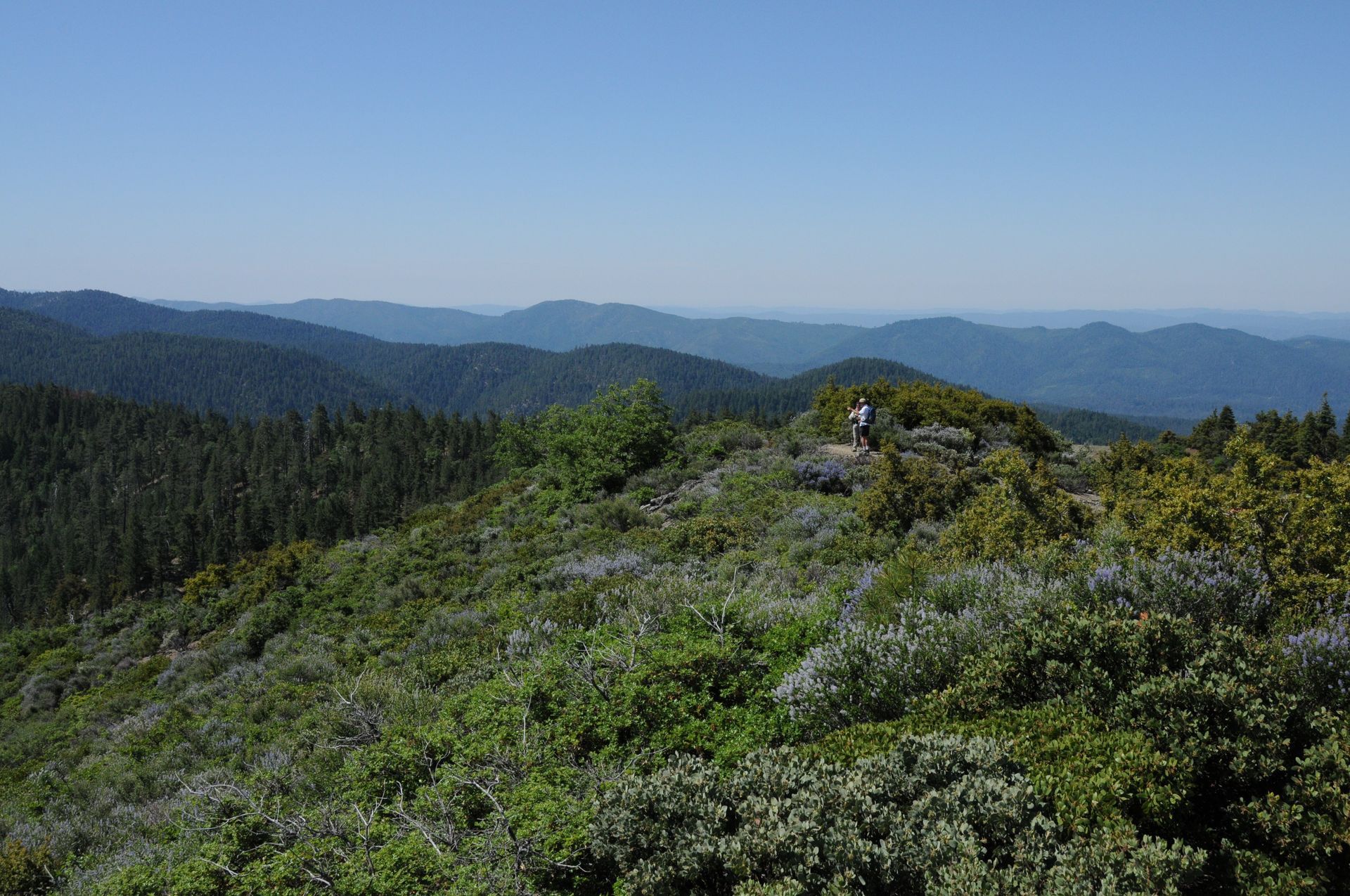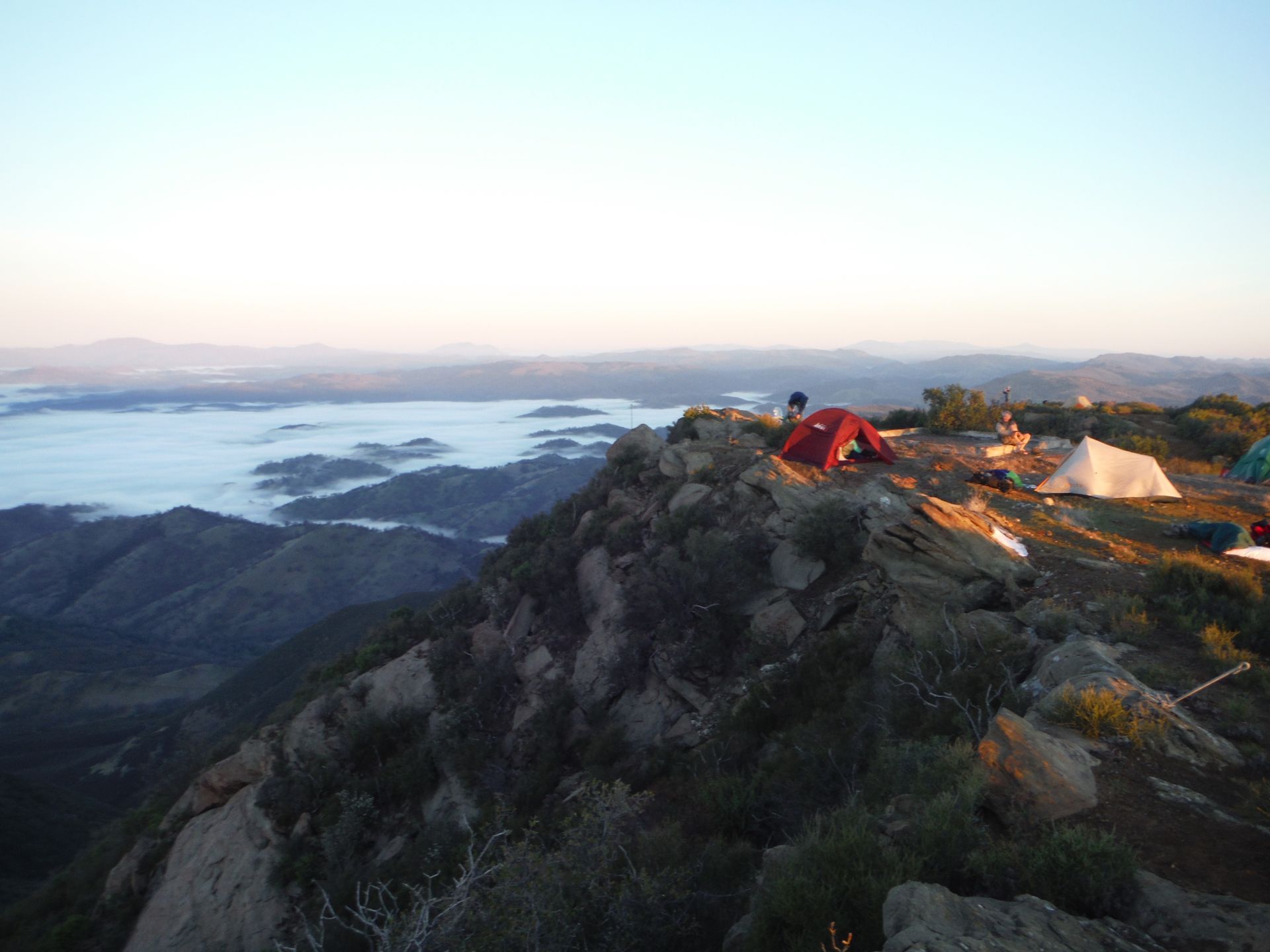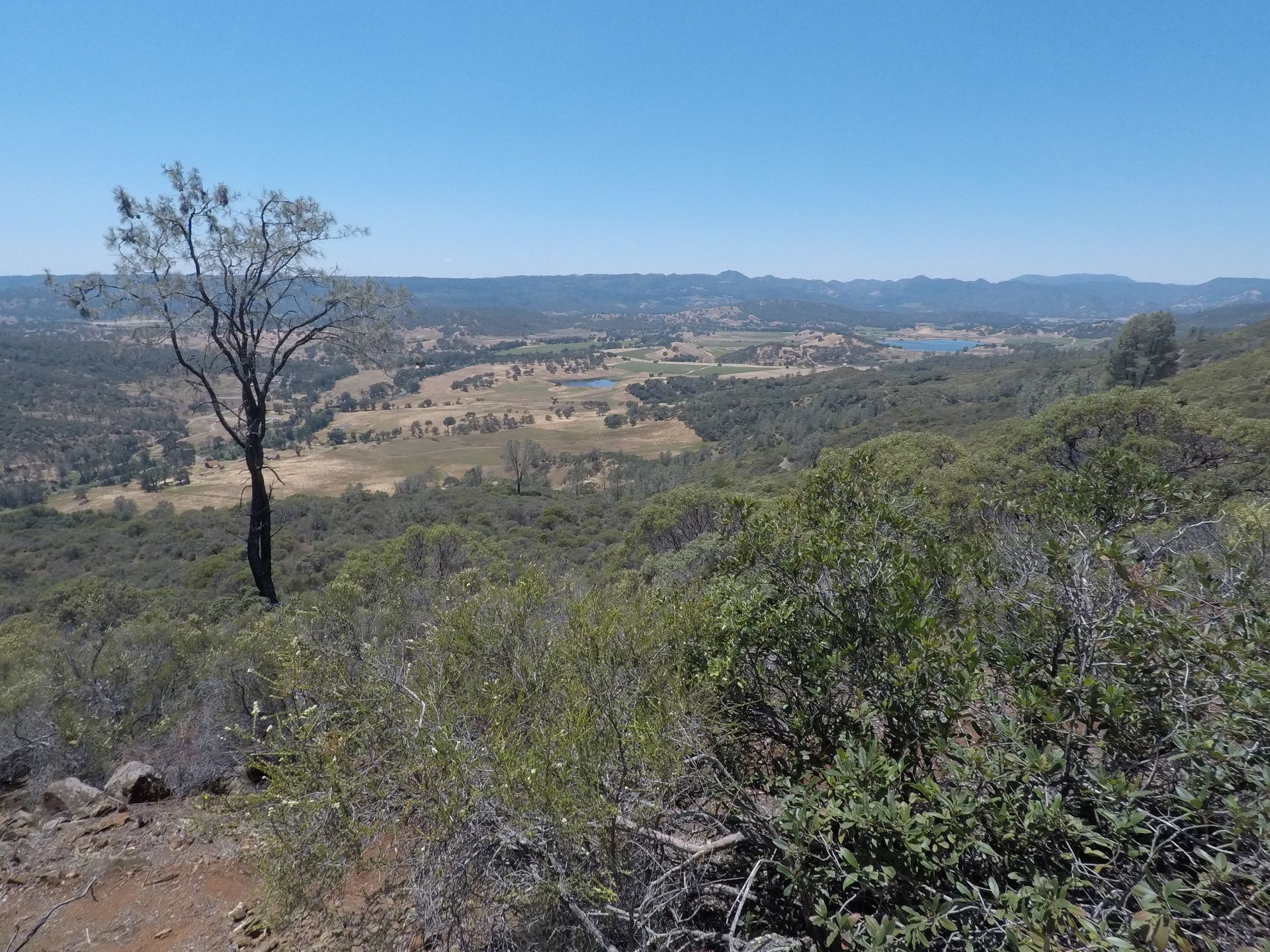Monumental Questions - Where are the Best Views in Berryessa Snow Mountain National Monument?

There are many views along the trail to Snow Mountain
Berryessa Snow Mountain is blessed with many outstanding features: rare species, beautiful wildflowers, iconic animals, and steep canyons. There are many prominent points throughout the Monument which provide magnificent views. Here are some of our favorites.
Annie’s Trail is a loop trail that is accessed via Stebbins Cold Canyon. The western leg of the loop is along the ridgeline overlooking Lake Berryessa. Near the southern end, there is a short side trail that leads to a rock that appears to be hanging off the ridge – Annie’s Rock. This is a great place for lunch or to take short rest. From this point on a clear day, hikers can see Berryessa Peak, Mount Konocti, Cobb Mountain, Cedar Roughs, and Snow Mountain

Morning on Berryessa Peak
For those that like to earn their beautiful views, look no further than Berryessa Peak and Snow Mountain (the two peaks that provide the name to Berryessa Snow Mountain National Monument). The hike to Berryessa Peak is just over 7 miles but is uphill, mostly exposed, has no water, and is an out-and-back trail. Looking west from Berryessa Peak, you see most of the reservoir as well as Cobb Mountain and Mount Konocti. To the east, Capay Valley is visible with the Sacramento Valley and Sierra Nevada in the distance. Snow Mountain is the highest point in the Monument. Views from the top are great but there are multiple vantage points along the trail to the top (Summit Springs is the shortest hike).
I must include the trail that is named after its views: Valley Vista Regional Park. This Yolo County Park is located north of Rumsey where CA-16 enters the Cache Creek canyon. Tuleyome worked with the County to build trails in the park. The initial trail rewards hikers with views of Capay Valley stretching to the south. Newly constructed trails now provide hikers with views of Cache Creek as it winds through the canyon.

Pope Valley from Pope-to-Putah Trail
These four viewpoints are located within the boundaries of Berryessa Snow Mountain National Monument. However, the region around the Monument has some spectacular views as well. Pope-to-Putah Trail (P2P), west of Lake Berryessa and just north of Cedar Roughs Wilderness, has a short side trail to a hill overlooking Pope Valley. This hill has no official name but is known as Walter’s Hill by those that helped build and maintain P2P. Great views of Lake Berryessa from the north are available along the North End Trail and at Eticuera Creek Day Use Area. Lastly, a good view of the entire length of the Monument is available from the top of Mount Konocti.
-Nate Lillge; nlillge@tuleyome.org
Adventures and Engagement Director
Certified California Naturalist
RECENT ARTICLES






